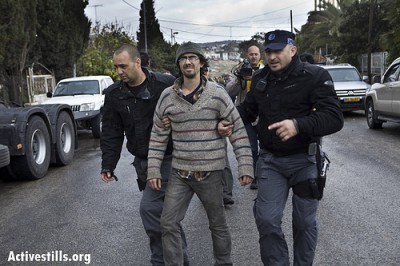-
Activist Ryan Olander released from immigration detention
International Solidarity Movement 23 January 2010 As the sun set behind watchtowers and barbed wire fences at Ramle prison Thursday January 15th, Ryan Olander emerged from the steel auto locking door and into the unrestricted air. Ryan had just spent 29 days locked in the Givon immigration detention center located in Ramle, Israel following his […]
-
CJPME: Canada to withdraw its funding to UNRWA
Canadians for Justice and Peace in the Middle East 21 January 2009 Last week, the government of Canada quietly announced it would discontinue its long-standing financial contributions to the United Nations Relief and Works Agency (UNRWA), and redirect the monies to strengthen the judicial system of the Palestinian Authority and other food assistance programs. The […]
-
Protester Injured in Bil’in During Weekly Non-Violent Demonstration
Friends of Freedom and Justice 22 January 2010 Today 30 to 40 Palestinian, Israeli, and other international protesters marched through the West Bank village of Bil’in to the Israeli built separation barrier, ruled illegal by the International Court of Justice. Per usual, the demonstration was dispersed by tear gas projectiles and concussion grenades shortly after […]
Action Alert An Nabi Saleh Apartheid Wall Arrests BDS Bethlehem Bil'in Cast Lead Demonstration Denial of Entry Ethnic Cleansing Farmers Gaza Global Actions Hebron House Demolition International law Israeli Army Jerusalem Live Ammunition Nablus Ni'lin Prisoner Ramallah Rubber-coated steel bullets Settlement Settlers Settler violence Tear-Gas Canister Video

